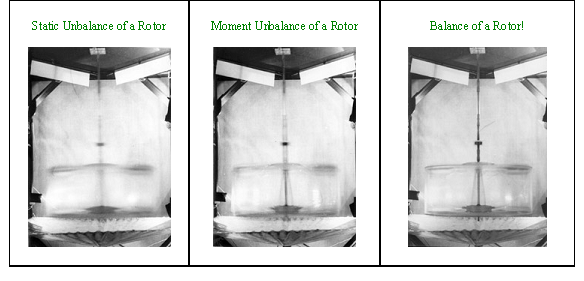|
THEORIES ON ROTOR DYNAMICS Inertial/New Theory of Rotor Dynamics  Any course of Physics or Engineering Mechanics includes Dynamics of Rigid Body, because the dynamics plays an important role in manufacturing engineering. General merits of basis dynamics creation belong to Galileo Galilei and Isaac Newton. Euler, d'Alamber and Lagrange played a general role in development of analytic methods of body dynamics study using differential and integral calculus. Founders of analytic methods considered the dynamics issues of absolutely rigid body rotation in absolutely rigid supports. Also, they studied the rigid body motion about fixed point and rotation of free body. An approximate theory of gyroscopic effects appeared far later. However, appearance of gyroscope approximate theory based on dynamics of rigid body motion about a support point showed that dynamics problems are more complicated than motion founders of the analytic methods had been studied. Experimentally detected rotor deflection from the rotation axis beginning from some speeds delivered a heavy blow to understanding of gyrodynamics. The classical dynamics theory turns out to be verdant to resonance and rotor self-alignment effects. Unavailability of acceptable theory and insufficient analysis of the gyro-process physics resulted in vibration theory application to study the rotor dynamics. In 1869, Renkin pioneered the analysis of "vibration" motion of the flexible shaft with rotor. Since then, the rotor dynamics became a part of vibration theory and a proving ground to use the fundamental equations of vibration theory. Over the all time, the vibration theory equations tailored artificially to describe the rotor dynamics, even to the detriment of the process physics. The terms used in the literature reflected superior role of the vibration theory. So, the rotor dynamics had been considering as "bending vibrations of flexible rotors". Due to vagueness of the process physics, the Lagrange method found a wide application in the vibration theory of the rotor dynamics. On of Lagrange method advantages is an opportunity of mechanical approach to problems. However, the Lagrange method provides solutions even if initial data are erroneous. Certainly, high-scale application of the vibration theory to solve inappropriate problems could not provide a positive result. When the fundamental equation of the rigid rotor dynamics on flexible shaft is examined carefully, it is clear that these equations are erroneous. It is unlikely that study used erroneous equations is true. We turned back to origins of Physics and Engineering Mechanics and attempted to find what fell within the view of Newton, Euler and Lagrange during gyrodynamics study. We discovered vary important feature and created new "inertial" theory of the rotor dynamics. Ground of the "inertial" theory is new hypothesis and proper understanding of the process physics. The theory provides construction of the acting forces diagram according to requirements of the classical physics and engineering mechanics. Possibility of error reduces to zero and is easy to check by comprehensive analysis of the diagram of acting forces. New "inertial" theory exists already and solves successfully the rotor dynamics issues. The "vibration" theory would be applied within the "inertial" theory as means to solve the typical problems dedicated to the vibration. If classical physics and engineering mechanics include Newton-created dynamics theory of rigid body in rigid supports, so "inertial" theory is a further development of the classical theory of rotor dynamics in case of rotor or shaft is not a rigid body. New insight into physics of the rotating body impelled us temporarily refusing differential and integral calculus, and we took successfully a short at solving most problems of dynamics using algebraic equations including Newton's forces and moments. This is not a backward step of mathematics, but forward step of physics. We are just aware that most progressive methods of the mathematical analysis lead to no positive results without sharply defined and accurate selected initial data. Just our understanding of gyrodynamics we attempt to present in our studies, using as simple mathematical tool as possible. It is a satisfaction to note that most of gyrodynamics issues are solved by means of algebraic equations of no more than third-order. Such is indeed the example how important to correct insight into the process from the physics point of view. |